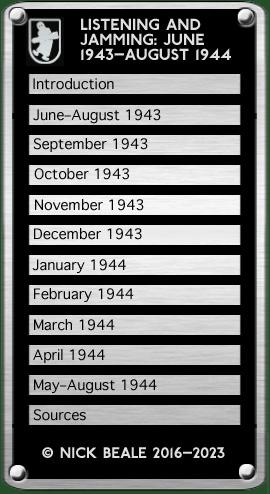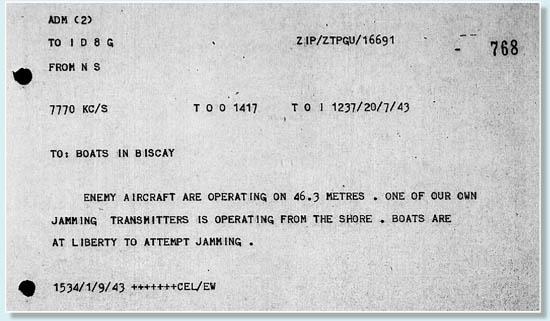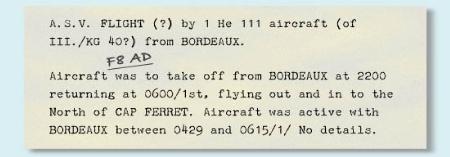 |
||
|
From the night of 5/6 July onward, traffic was picked up disclosing overnight maritime surveillance (Überwachungsflug in German messages) by radar-carrying Fw 200s of KG 40. It certainly made sense for the Germans to be watching Biscay by night as well as by day, for the safety of U-boats on passage as well as their own surface units. Among the aircraft whose signals were picked up was “D”, factory marking CE+IO (Fw 200 C-4, W.Nr. 0150). The 13th saw the Cheadle intercept station picking up on “unusual activity from the Bordeaux area”, some form of exercise involving a ship, a plotting station, an aircraft and its ground controller. Although the aircraft was off Royan at midday, the ship had still not sailed over three hours later. On the night of the 15/16th, aircraft “A” was active west of La Rochelle after taking off at midnight but turned back inside the hour after reporting — in plain language, because it had no code book aboard — a defective “HTL” (Hohentwiel radar). A nine-hour sortie from 1945 on the 20th was attributed to III./KG 40 however. Shorter night flights with radar also took place, some attributed to exercises. In Britain this was noted as “the first direct evidence of ASV being fitted in Fw 200 aircraft in the Western area”. The unit concerned was thought to have been the 2. Staffel which had been withdrawn from operations at the end of May for, it was believed, re-equipment/retraining.
Meanwhile, the Kriegsmarine was introducing new monitoring receivers but for the time being only prototypes were available, with just two sets expected during July. There was an “ASV Flight” by one aircraft on the night of 30/31 July, the machine being told in the early hours to land at Cognac rather than Bordeaux. When the first overnight operation by an He 111 was noted, on 31 July, it too was thought to involve Air-to-Surface-Vessel radar (times given are GMT + 2 hours):
Meanwhile, the Kriegsmarine was introducing new monitoring receivers but for the time being only prototypes were available, with just two sets expected during July..
At the end of July, the submarines were directed to make only sparing use of "Metox" for fear that Allied aircraft were homing on its emissions. An inspired piece of misinformation from a prisoner “confirmed” this suspicion and by 12 August boats had been told to stop using it altogether. However U-161, the first with the new “Hagenuk” warning receiver, had sailed four days earlier and the device had worked perfectly all the way across Biscay:
Two days later a directive was issued to boats crossing Biscay: ”… as far as possible surface only by night and to charge batteries. Until further notice, boats equipped with ‘Hagenuk’ too, are only to surface by night to charge.”
continued on next page …
|
||||




